Text
Is Sir Gawain a Queer Icon? Let’s find out!

Sir Gwain in Sir Gawain and the Green Giant is portrayed as a pretty Queer character. Between kissing Lord Bertilak, giving up the hunt and crying in front of the Lord’s Court, Gawain seems to emulate queer tendencies.
Given that Gawain is meant to be the picture of masculinity in this story (and maybe eve represents the rising middle class). So it is interesting that he kisses Bertilak 3 times, each more passionate than the last, for each time he kissed his wife. He does this in exchange for the bounty of the hunt. But upon Bertilak's insistence, he stays behind for every hunt (Letting a man take care of you??). Giving up the hunt seems like it should be a big deal, as hunting is reserved for nobles at this timeIt’s seen as a trait of masculinity. Him letting another man hunt for him is very similar to letting someone take care of you, which isn’t traditionally. So he's giving up his traditionally masculine traits for a guy?
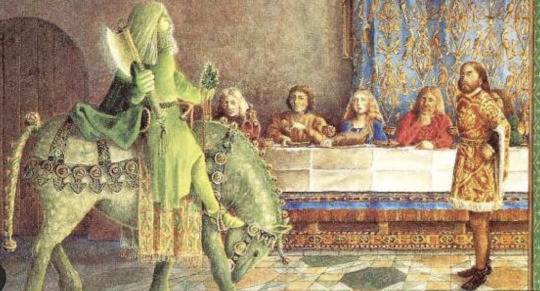
When Gawain goes to fight the Green Knight, he meets with Bertilak and his court before he leaves. As he’s saying goodbye, he cries, saying how thankful he is for the court. Crying is traditionally a feminine characteristic, so the fact he’s crying is definitely a queer moment.
In other stories, Gawain is still the picture of masculinity, but he’s not so heavily queered. Sir Gawain and the Green Knight is one of the few stories where Gawain is heavily queered, therefore it is debatable whether he’s a queer character given his regular appearance in Arthurian Literature. What do you think?
Image 1: Medieval Chronicles, unknown
Image 2: Green Knight on Horseback, Unknown
#gawain#guenevere#arthur pendragon#king arthur#medieval literature#lancelot#round table#lancelot du lac#booklr#books#sir gawain#merlin x arthur#merlin#queen guinevere#sir lancelot#arthurian literature#arthurian legend#lady of the lake#arthurian mythology
9 notes
·
View notes
Text
Disney Villains as Arthurian Characters
We compiled a list of our favorite Arthurian villains, and compared them to some of our favorite Disney villains. Surprisingly, there’s a LOT of similarities; whether it’s motives, gender expression, or character traits, there are some great, classic Disney counterparts to traditional Arthurian villains.
Morgan le Fay as Maleficent
This one is a bit self-explanatory; “evil sorceress obsessed with killing a certain member of a royal family” is a category that both Morgan le Fay and Maleficent fall neatly into. In Arthurian legend, Morgan le Fay does whatever it takes to kill King Arthur, her brother. She’s portrayed as vengeful and cunning; definitely not a good character. Likewise, in the 1959 Disney film Sleeping Beauty, Maleficent curses Princess Aurora to die and spends sixteen years trying to make this happen! She devotes her life to revenge against the king by cursing his daughter, and her scary presence makes for one of the most iconic Disney villains ever. This is just the most obvious similarity between the two, though; when you look deeper into it, they’re really very alike!
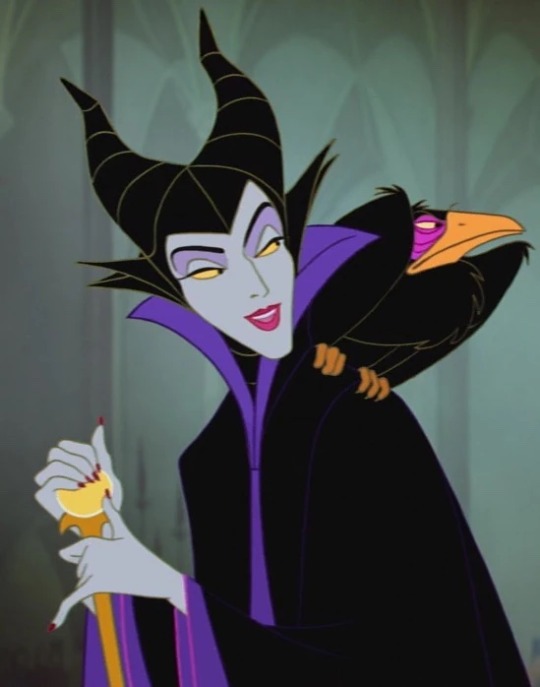
One of the biggest similarities between the two characters is their ability to shapeshift. If you read “Aftir Thes Questis” in Le Morte D’Arthur, you’ll remember when Morgan le Fay transforms herself into a rock while Arthur is chasing her. Because of this, she’s able to get away—she even boasts about it later, saying that she’s not afraid of Arthur since she can do magic and shapeshift whenever she wants! Her kinda-bravado is a notable aspect of her character and shows how capable she is with magic—she can’t fight with a sword and shield like the male characters, so she turns to magic to keep herself squarely in the game. Honestly, it makes her so much more interesting than Arthur; her motives are confusing and, while we know we should be on Arthur’s side, we want to see what she does next!
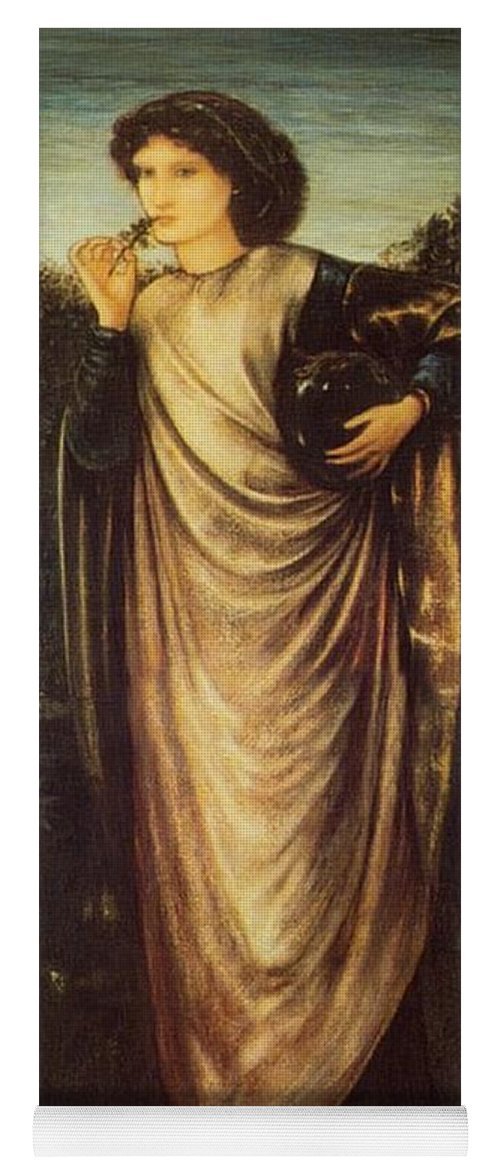
In Sleeping Beauty, Maleficent has a similar shape shifting moment of her own. Near the climax of the film, Prince Philip breaks free of the dungeon Maleficent had imprisoned him in. While he’s on his way to save Aurora, Maleficent transforms into a terrifying, purple dragon in order to stop him. This was honestly such a scary scene to watch as a kid and it still holds a lot of authority; it’s the classic hero vs. villain end-scene battle, and is the ultimate expression of Maleficent’s power. Can Prince Philip shapeshift??? I don’t think so. Even though she loses the battle because the story needs a happy Disney ending, it’s still an iconic scene; we remember Maleficent as the terrifyingly interesting sorceress, not just the loser of the battle. She’s such an interesting character because of her wickedness (which is a lot like Morgan le Fay…); I rest my case on the fact that she got her own film series with Angelina Jolie.
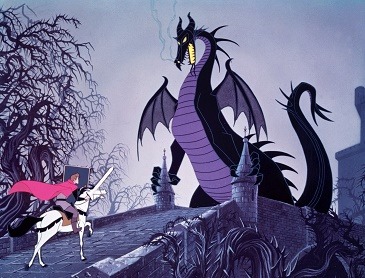
What really brings these two characters together, at least for me, is that I still end up liking them even though they’re villains. Their feminine characteristics are so fleshed out, they possess insane magical powers, and they devote their whole lives to revenge—they’re way more memorable than boring Prince Phillip and do-nothing King Arthur! They’re the real stars of the stories they’re in.
Image one credit: Sleeping Beauty, 1959, Walt Disney Productions
Image two credit: Morgan le Fay, 1862, Edward Burne-Jones
Image three credit: Sleeping Beauty, 1959, Walt Disney Productions
Guenevere's mom as Ursula
Surprisingly, Queen Guenevere’s mom from The Awntyrs Off Arthure is very similar to the one of the most beloved (or feared, depending how you look at it) Disney villain, Ursula from The Little Mermaid. Despite the obvious differences due to both the time periods, existence and the settings, the way they embody their femininity is one and the same.

Both are portrayed/described as hideous and powerful characters. Ursula uses her power to control Ariel and in turn King Triton, similarly Guenevere’s mom uses her ghostly state to scare the men into changing the way they portray their masculinity. Their power caused them to be feared by the characters in the stories. Ursula was shown as a manipulative con-women and Guenevere’s mom was described as a spiteful ghost condemned for being too prideful and as an adulterer. Guenevere’s mom is also fairly manipulative, for example, she uses christianity’s hell to scare Guenevere into praying for her soul and the future death of Arthur to scare Gawain into changing the way he portrays his masculinity.

I think we can all agree that this powerful portrayal of femininity is what makes them such great villains, as it challenges gender norms and threatens masculinity. Who doesn’t love that? Strong female characters are personally my favorite villains or not.
Image 1; “Ursula the Sea Witch Animation Cel”, Smithsonian’s National Zoo & Conservation Biology Institute, 1998
Image 2: “Ghosts in Medieval Literature” Medievalist.net, Lady Guenevere, Howard Pyle, 1903
Mordred as Jafar
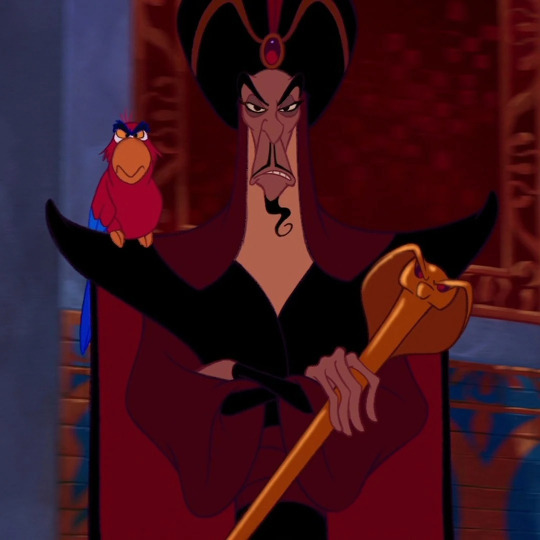
One thing that both Mordred and Jafar have in common is betrayal. Mordred betrayed King Arthur by usurping him (also playing a key role in the downfall of Camelot (and himself)), while Jafar betrayed Amara by turning her into a serpent. Both characters sought to gain more power and authority at the expense of others; both wanted to gain control of a kingdom. And, in the end, both characters’ lust for power and control ended in their downfall—Mordred ended up dying while battling Arthur, while Jafar ended up dying after his lamp was destroyed by Iago. Traditionally, Mordred embodies a more toxic masculinity, driven by things like ambition and, once again, a desire for power, just like Jafar.

While both characters embody these particular power-hungry toxic traits, it’s important to note that these portrayals are dated and don’t align with today’s values of masculinity.
Image 1: Mordred, 1907, Howard PyleImage 2: Aladdin, 1992, Walt Disney Productions
Lancelot as Hans

Now, don’t get me wrong. There are a lot of differences between Lancelot and Hans. One is the greatest hero of Arthurian Legend and one is the twist villain of one of the highest grossing animated movies of all time in 2013’s Frozen. But at the end of the day, there are quite a few similarities as well. Both are love interests to a female member of a royal family, with Lancelot pining for Guinevere and Hans and Anna establishing a rapid connection with one another (I mean, they sing a song about their love for one another, so you know it’s important to Anna at least; after learning Hans’ plan, the song kind of loses its umph, though). They both also are seen loyally serving the one they are romantically attached to without question, as Lancelot is constantly saving Guinevere from danger and obeys all of her commands and Hans takes over the kingdom in Anna’s absence while she tries to save Elsa because she tells him to.
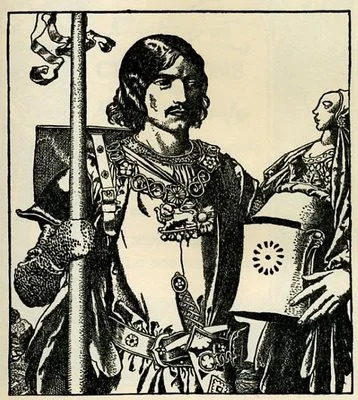
The main crux of their connection is the trust they gather before their betrayal. Hans knows exactly what he is doing and has been trying to gain Anna’s trust from the very beginning and yet plans to betray her when the time is right. He is thirteenth in line for a crown he will likely never get, so he goes to Arendelle to take that crown instead. Meanwhile, Lancelot betrays Arthur not because he wants to, but because his love for Guinevere was too strong to ignore. One feels no love for their supposed romantic partner and one feels such strong love that it causes problems. When it comes to Hans and Lancelot, it is more of the idea of the betrayal that connects them over any other aspect, as they are mostly polar opposites otherwise. However, behind the scenes, they have another connection. Lancelot is a later addition to the Arthurian Canon and, similarly, Hans is one of Disney’s more recent animated villains in their own “canon”. And yet, everyone agrees that Lancelot is essential to the Arthurian Canon and many people, including myself, see Hans as one of the more recognizable and important villains in Disney’s vast library of such villains. But really, Lancelot. You could have avoided the whole betrayal problem if you could keep your hands to yourself for five minutes…
Image 1: Frozen, 2013, Walt Disney Productions
Image 2: Sir Lancelot du Lake, 1907, Howard Pyle
#gawain#arthur pendragon#guenevere#king arthur#medieval literature#lancelot#round table#lancelot du lac#booklr#books#jafar#jafar aladdin#disney jafar#jay son of jafar#magi jafar#disney villains#cruella de vil#aladdin#peter pan#classic disney#morgan le fay#mordred#camelot#knights of the round table#arthurian legend#maleficent#sleeping beauty#cinderella#mulan#ursula
10 notes
·
View notes
Text
We love Maleficent!!<33
Disney Villains
#guenevere#gawain#king arthur#round table#lancelot#lancelot du lac#booklr#medieval literature#books#disney classics#aladdin#disney animation#walt disney#disney movies#maleficent#sleeping beauty#disney villains#i need sleep#bed#arthur pendragon#disney#slumber#rest#the little mermaid#prince eric#king triton#ursula#bedtime#ariel#flounder
3 notes
·
View notes
Text
Disney Villains
#arthur pendragon#gawain#guenevere#king arthur#medieval literature#round table#lancelot#lancelot du lac#booklr#books#disney classics#disney#disney villains#disney movies#disney animation#aladdin#walt disney#maleficent#sleeping beauty#i need sleep#bed#slumber#rest#bedtime#ursula#ariel#king triton#the little mermaid#prince eric#flounder
3 notes
·
View notes
Text
Disney Villains
#arthur pendragon#gawain#king arthur#guenevere#round table#medieval literature#lancelot#lancelot du lac#books#booklr#disney#villain#disney villains#cruella de vil#cruella 2021#cruella movie#disney movies#disney classics#maleficent#101 dalmatians#lion king#jafar#jafar aladdin#disney jafar#princess jasmine#disney renaissance#ursula#ariel#little mermaid#king triton
20 notes
·
View notes
Text
Day in the Life of King Arthur
This post will cover how Arthur’s authority impacts how he uses his masculinity in the Stanzaic Morte. It will cover the events leading up to Arthur's death and how his lack of backbone led to this–it will be a sort of play-by-play from event to event.

I just spent a few hours in bed with Guinveve today, and wow, she is still as beautiful as ever! She didn’t seem as into it as usual, but I still enjoyed myself. So when she suggested holding a tournament, how was I to refuse? Sure, as king, I should be the one making those kinds of decisions, but a good idea is a good idea, so I’ll just follow her suggestion. I mean, we all know Lancelot is going to win. He always does, which makes sense given he’s the greatest and most virtuous knight we’ve got. I can always count on Lancelot in a pinch, that’s for sure.

The tournament started today and wow did my knights impress me! However, the winner was definitely that stranger with the red sleeve. I don’t know who he was, but he was by far the most powerful opponent the knights faced. I can’t believe I’m about to say this, but I bet he would be equally matched with Lancelot! I was upset to see the knight wounded and even more upset to see him flee. I plan to hold another tournament in a month’s time, though I doubt our strange knight will be able to attend with how badly he got hurt. I’m still wondering where Lancelot was in the tournament, though. Seeing the two of them fight would have been amazing! Well, maybe he’ll show up for the next one…
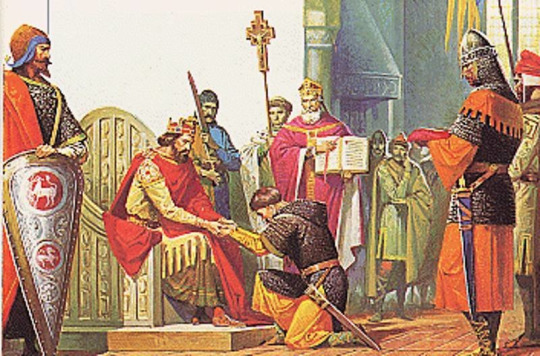
Well, the other tournament was a bust. I didn’t expect the stranger to attend, but Lancelot didn’t show up either. I was wondering where he was until Gawain showed up and told Guinevere and I about how the Maid of Ascalot had his shield. Imagine my surprise when Gawain told my queen and I how the two were lovers! I had always wondered if Lancelot had a lover, but the Maid of Ascalot would not have been my first guess! Guinevere seemed disturbed by the news and I couldn’t tell you why. She and Lancelot always seemed close, but I have to admit I’m not sure what the problem is. A man needs a woman in his life, after all. Maybe she’s just being moody.

Lancelot has returned and fled again, all thanks to Guinevere and her mood. I would reprimand her, but she’s in trouble enough as it is and I wouldn’t even know how to bring up Lancelot to her right now. I mean, a dead Scottish Knight was found with her and things really don’t look good, especially because Sir Mador, his brother, showed up to avenge him. I also found a boat with the Maid of Ascalot’s dead body and note condemning Lancelot for her death! I don’t even know what to believe anymore. I mean, Lancelot never confirmed nor denied his involvement with the Maid, but still, two accusations in the same period of time? Now Guinevere needs someone to defend her in a trial by combat and Lancelot is nowhere to be found. I wish I could change the laws to protect Guinevere, but what would people think of me if I defended a possible killer? At least Bors agreed to fight Sir Mador for her if Lancelot doesn’t show up. Who knows, maybe he’ll come back at the last second like always! We’ll just have to wait and hope.
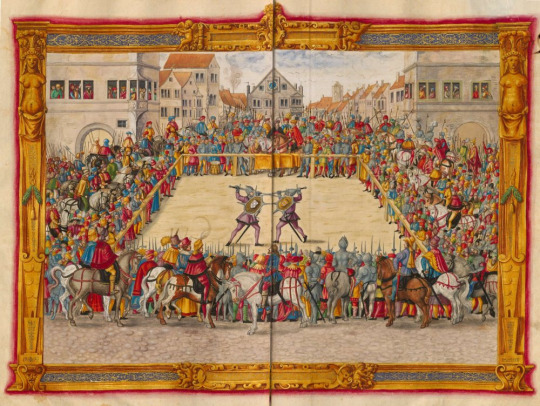
Lancelot showed up! He was in a disguise for some strange reason (he’s always had a thing for them; it’s really weird if you ask me, but if it works, it works) and fought off Sir Mador. Now I’m hearing whispers of Guinevere being unfaithful from Agravaine and I just don’t know what to do. It’s probably just all talk. Guinevere would never sleep with another man!

Agravaine was right! Not only have Lancelot and Guinevere been seeing each other behind my back, Lancelot slew all of the knights that tried to confront him! At least Mordred survived the slaughter Lancelot caused. Him, I know I can trust. Gawain was really upset to hear his brothers died and I have to say it hurts to have knights slaying each other, almost as much as Lancelot’s betrayal hurts. It was hard to sentence Guinevere to death and I’m almost grateful that Lancelot rescued her. However, I still want her back on our side. We begin marching to Joyous Gard tomorrow to take back Guinevere. Off to war!

The war has been going on for a few months now with neither side prevailing. Lancelot seems almost afraid to kill me and despite my best attempts, he’s too powerful for me to kill. I’m not sure what Lancelot was thinking when he gave me his horse to ride out of danger. This war isn’t going anywhere and we aren’t making any headway. I hear words of the Pope getting involved and it sounds like I’ll be getting Guinevere back at his command. Lancelot isn’t off the hook, though. Gawain still wants him dead and I have to agree. If Lancelot and Gawian fought at the right time, Gawain would have a chance at winning!

Guinevere has been returned to me, but Lancelot still must be dealt with. I plan on leaving in a few days to assault Lancelot in his land of exile. I’m leaving Mordred in charge as temporary king. I know I can trust him to watch after Guinevere without anything funny going on. Gawain is still out for blood and I’m still convinced he’ll have a shot if he and Lancelot fight. Only time will tell, though.
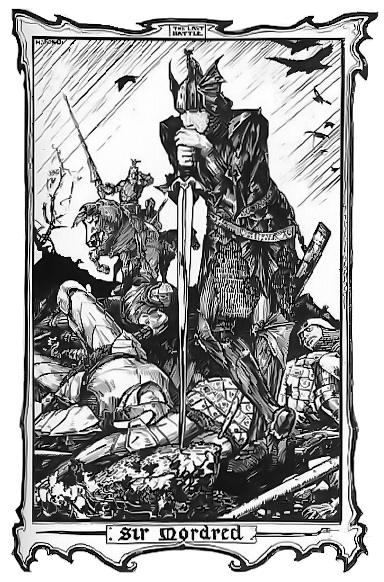
What is it with me and traitors? Now Mordred has turned on me and threatens my kingdom! I hate to have to leave Lancelot, but I have a bigger threat to face. Besides, Gawain lost to Lancelot twice now and I can’t bear to see him wounded a third time. We’ll deal with Mordred and then come back for Lancelot.
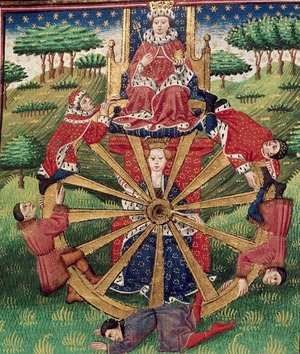
Gawain is dead! There have been two battles now with Mordred’s forces and Gawain was slain in the second one. It’s starting to look like we have no chance of defeating Mordred. I had a dream about the mysterious Wheel of Fortune and Gawain appeared in my other dream with some advice. He told me to wait for Lancelot’s army to come help and thus I have sent for Lancelot to aid us. We’re going to negotiate with Mordred, if the bastard can be reasoned with, but no swords must be drawn. That would spell disaster for any peace talks we might have.

So many knights have been slain now, all because of one snake! When trying to negotiate with Mordred, a snake appeared and one of my knights pulled his sword to slay it. That started the battle and now I am knee deep in loyal and disloyal knights’ bodies. Mordred is threatening me and I see no reason to deny him the fight he desires so badly. I will slay him!

Is this what death feels like? I am lying by the lakeside at this moment as a boat appears from the mist. I have already had Bedivere throw Excalibur into the water so the Lady of the Lake could reclaim what was her’s. It took three tries, but he finally obeyed his king. As I am helped into the boat, I can feel my life fading fast. I can only hope the powers of Avalon can save me…
#guenevere#gawain#arthur pendragon#king arthur#medieval literature#round table#lancelot#lancelot du lac#booklr#books#bookblr#books & libraries#book quotes#merlin x arthur#arthur morgan#arthur lester#guinevere#gaius#bbc merlin#gwaine
5 notes
·
View notes
Text
Is Lancelot a queer icon? A character analysis!
Hello noble readers, and buckle up for a long post. This time, we’ll be talking about Lancelot du Lake–arguably one of the most famous knights of the Round Table. Normally when we talk about Lancelot, we’re talking about his devout, somewhat insane love affair with Guinevere. But instead of that, we’re going to discuss a particular story in which Lancelot goes through some queering events. This post is about Sir Thomas Malory’s “The Noble Tale of Sir Launcelot du Lake”, and all the ways in which Lancelot is characterized as a queer character.

First up, we have to talk about the scene with the four queens in this story. If you’re unfamiliar with it, this is the part where Lancelot is just sleeping in the woods (???) and these four beautiful queens basically kidnap him, bring him to a castle chamber, and force him to take one of them as his lover. That’s not the weirdest thing to happen in medieval literature (looking at you, Wheel of Fortune), but the weirder part is Lancelot’s response. He says that he would rather die than choose one of them. Refusing women when they offer themselves to him is significant; he’s the most famous knight in the land but, time after time, he keeps on saying that he doesn’t want to take a wife or lover. An important side note here is that his relationship with Guinevere has not been established yet–in this story, he’s a single man! Lancelot choosing to reject all four of those beautiful, powerful queens is an important queer aspect of his character; he is alone and unattached even though he has the opportunity not to be.
This leads into our next point–Lancelot explaining why he doesn’t want a wife or even a paramour. He first says that all the rumors about him shacking up with Guinevere are completely false. Then, he adamantly states that a wife would only hold him back from participating in tournaments, jousts, battles, and adventures. He also says that having a paramour just feels wrong to him and would only make him a worse knight. Basically, Lancelot says a lot of not-so-nice things about women here; they’ll only hold him back, he’s stronger without them, etc. But if we combine that with his refusal earlier, the queer aspects of his character start to add up. He will actively refuse women over and over again because, unlike basically every other knight out there, he doesn’t see the need to have his own wife. It leaves him in a weird position; he isn’t acting like any of the other knights we so often read about–he isn’t even acting like the version of himself we’re familiar with from other iterations of Arthurian stories. In those, he is devoted to Guinevere; he fights battles for her, gives her presents, and constantly has to prove his love. Here, he’s a lone knight, wandering from battle to battle–his more significant interactions are with fellow knights, leaving women behind entirely.
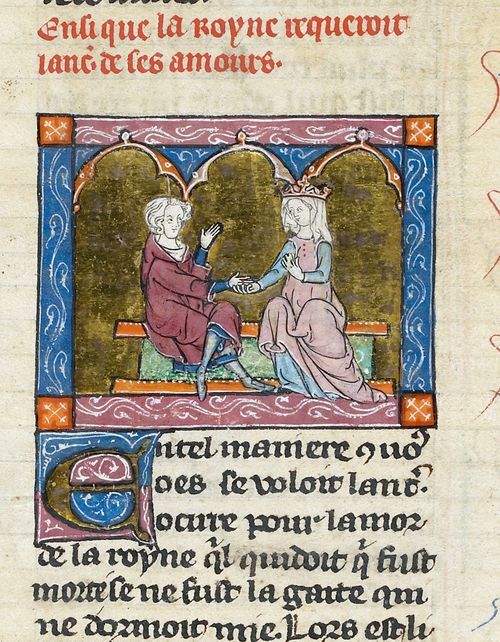
This leads into our final point about Lancelot’s queering in this story; his interactions with male characters! Towards the beginning of the story, Lancelot seeks shelter for the night in a random pavilion (basically a tent). Unbeknownst to him, the pavilion belongs to Sir Belleus, who misrecognizes Lancelot as his lady and starts to kiss him as Lancelot is sleeping! This one is just plain obvious; Lancelot was both misgendered and was kissed by another man. If that’s not a sign of literary queering, then I don’t know what is, so let’s move on. Later, Lancelot spends the night with Sir Kay–while their sharing of a bed may seem like queering, this was actually commonly done and totally nonsexual, so we’ll skip it. The more important part of this glorified sleepover is that Lancelot switches his armor, shield, and horse with Kay. These are all essential to masculinity, so sharing armor is a somewhat intimate thing. Based on what we've already seen with Lancelot, this level of trust and intimacy is something he doesn’t want with women and can thus only have with men.
So, we’ve talked about the queer aspects of Lancelot’s character in this story. He rejects women who offer themselves to him, hates the idea of being bound to a wife, and seems to have his closest relationships and interactions with men. It’s certainly different from the Guinevere-obsessed Lancelot we’re used to. Lancelot comes off as eccentric and even weird in this story–we didn’t even mention the part where he strips down to his underwear to climb up a tree. But since, in many other Arthurian stories, a knight’s masculinity seems to be supported by his lady, this separates Lancelot from others. In this story, at least, his gender construction doesn’t stay strictly within the binary and his motives and actions become harder to understand.
First image: Thomas Mackenzie, 1920
Second image: Miniature of Lancelot and Guinevere, north-eastern France or Flanders (St Omer or Tournai), 1316
#arthur pendragon#gawain#guenevere#king arthur#medieval literature#round table#lancelot#lancelot du lac#booklr#books#medieval art#medieval#middle ages#15th century#medieval history#historical#bookworm#book quotes#books & libraries#bookblr#reading#books and reading#book review#bookstagram#queer#queen#queer community
5 notes
·
View notes
Text
Launcelot or Arthur?? The Round Table's Opinion
Once upon a time, Sir Lancelot Du Lake and Queen Guinevere found themselves entangled in a love so forbidden it could rival any tragic romance. The twist? Guinevere is already married to none other than…King Arthur himself! 🙀
Let’s take a dive into one of Camelot’s greatest love triangles. Who do you think should be with Guinevere more; Arthur, or Lancelot? Remember to fill out the poll!

King Arthur. He’s always held steadfast to his commitment to the kingdom, but was he perhaps too steadfast? Guinevere’s relationship with her King came with a sense of stability and respect, but is the love mutual, or have Arthur’s devotions to his kingly duties overshadowed the affection he should be giving Guinevere? Could Arthur’s masculine values—duty, loyalty, and the greater good (taken to the extreme)—be what made Guinevere stray away from her husband and seek out the dashing Lancelot?
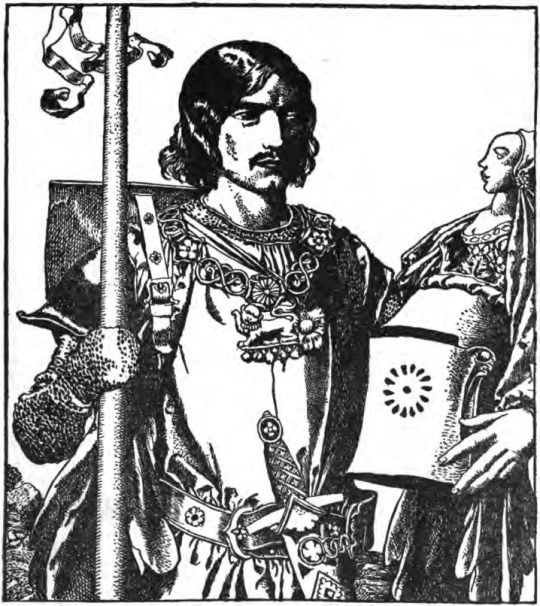
Oh Sir Lancelot…
Not only is he one of King Arthur’s greatest knights and companions (awkward!); he is also the epitome of chivalry and passion. His masculinity, marked by his prowess in battle and unwavering determination, is likely what sparked the Queen’s attraction to him! It is certainly no wonder Guinevere fell head over heels for him, even though their relationship is a rebellion against the norms imposed by Arthur’s reign, challenging the very essence of masculine values dictating the code of chivalry in Camelot.
While Guinevere’s relationship with King Arthur lacks the fiery romance Guinevere and Lancelot’s relationship has, it is more professional, manifesting the responsibilities and power that come with being queen.
#guenevere#gawain#arthur pendragon#king arthur#medieval literature#lancelot#round table#booklr#lancelot du lac#books#queen guinevere#sir kay#sir gwaine#books and reading#books & libraries#book quotes#librarians#public libraries
5 notes
·
View notes
Text
Guenevere's Lovers
#arthur pendragon#gawain#guenevere#king arthur#medieval literature#lancelot#round table#lancelot du lac#bookworm#books#booklr#books & libraries#book quotes#bookblr#books and reading#reading#goodreads#bookstagram#currently reading
2 notes
·
View notes
Text
Day in the Life of Launcelot
Similar to Guenevere’s day in the life post, we are again going to ask you to imagine a character as a modern day influencer--but this time it’s her lover, Launcelot Du Lake!
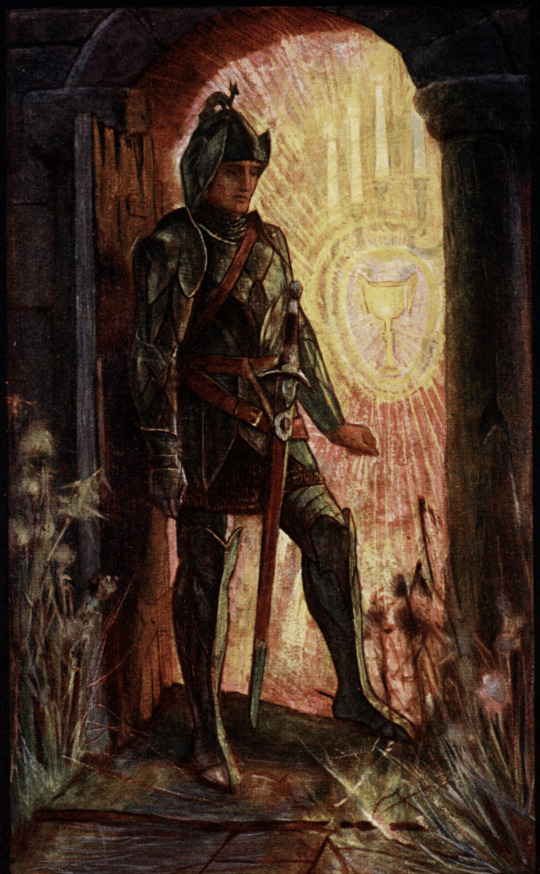
Hey guys… Launcelot here. Guenevere told me to get on here and give you a narration of a day in my life. So let’s look at the clips. Oh! Here I am after I’ve awoken in the morning, attending mass in the chapel like the great knight I am. I go here before I even eat breakfast.
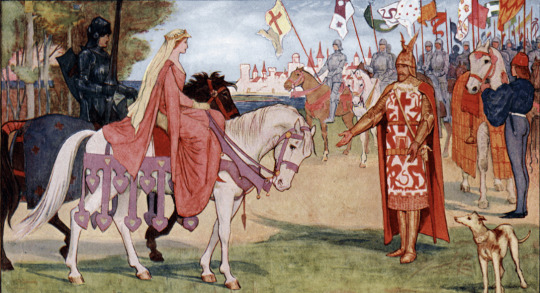
Let's move onto the next clip... Here I am dropping Guenevere off with King Arthur after mass. Guys, I'm only doing this because she's my patron, not because I love her or anything. Stop saying I do, guys.
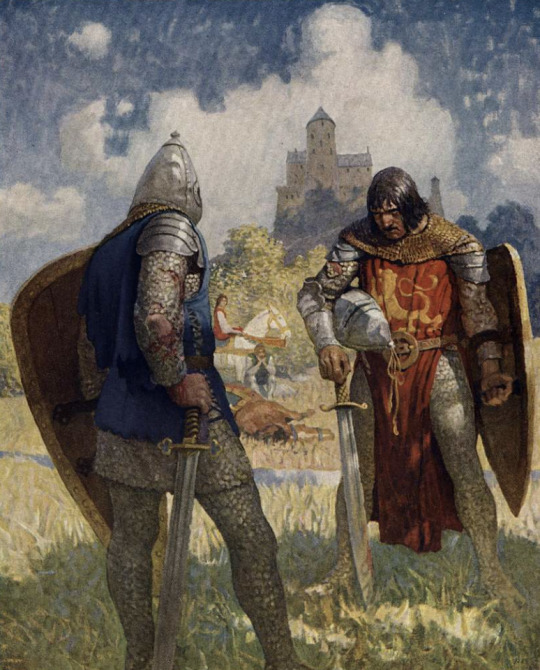
Ok... anyways... This is me in the middle of a tournament. This was our midday break because at this point we had been fighting for hours. Obviously I'm the guy in the blue, as I never go to a tournament undisguised. It takes the drama out of it. And as an influencer I can't live without the drama.

Speaking of disguises. Here’s a picture of me dressed up as a pilgrim to scare Guenevere. No other reason. Why would there be another reason?

And finally… Here I am at the end of the day taking a nap under a tree. For some reason some queens stumbled upon me and seemed super interested. But, of course I ignored them as I’m loyal to Guenevere. Wait, what was that. My bad....
Image sources:
First painting: Launcelot at the Chapel, 1902 CE Book of Romance, Published by Amy G, 2019
Second painting: Launcelot brings Guenevere to Arthur, E1902 CE Book of Romance, Published by Amy G, 2019
Third painting: Illustration p.38 of the Boys King Arthur, Sir Thomas Mallory and edited by Sidney Lanier, 1922
Fourth painting: Illustration from Skylocks version of Merchant of Venice Act II Scene 5, Shakespeare and edited by Peter Simon and Robert Smirke, 1795
Fifth painting: How Four Queens Found Launcelot Sleeping, Aubrey Beardsley, 2014
#king arthur#arthur pendragon#guenevere#gawain#lancelot#lancelot du lac#round table#medieval literature#day in the life#influencers#queen#books and reading#books#books & libraries#bookstagram#reading#currently reading#booklr#bookworm
8 notes
·
View notes
Text
Merlin, where have you been?

This post has the Arthurian Characters discussing in a script format the lack of Merlin’s involvement in most of the stories we have read so far, almost acting as an accusatory discussion.
Arthur: My knights, let this table discussion come to order. Today, Sir Lancelot, Sir Gawain, Sir Agravane and Sir Kay join me for this discussion. To start, I must ask: Sir Lancelot, how is my most respected knight?
Lancelot: Things are going rather well, my king.
Arthur: I still never told you how grateful I was for you slaying Malagant last week. His stealing of my queen was quite uncalled for and I appreciate you coming to her aid.
Lancelot: I was merely serving as any knight would.
Agravaine: *Cough* Liar *Cough*
Lancelot: What was that, Sir Agravaine? Do you doubt me?
Agravaine: I doubt that you didn’t use this as an excuse to get into Queen Guinevere’s good graces, and perhaps even her bed. You see, I believe that-
Arthur: Sir Agravaine, we have heard your theories before, but I still require proof to believe anything is amiss.
Agravaine: I speak the truth! All know it but you, my king.
Gawain: Calm yourself, brother. Tis the king’s business, not our’s.
Kay: Besides, Sir Agravane, if you wish to pick fights, perhaps you should pick one with Merlin.
Arthur: And what do you mean by that, my friend? Merlin has served both myself and the kingdom well.
Kay: I sincerely doubt that. He has been strangely absent during the adventures we have faced so far. Why, I still recall when Sir Gawain, Bishop Baldwin and I all visited the Carle of Carlisle. That beast of a man was, at least according to Sir Gawain, cursed. I missed all of the details, but the important thing is that he was slaying men who disobeyed him! I ask you, where was Merlin then?
Gawain: I am sure he had a good reason for not aiding us. We were far away from Camelot, in Inglewood Forest. How could Merlin have known to help us when we were not near him?
Kay: His magic knows no bounds, he could have easily helped us. And besides, this Carle had killed many knights. You are telling me that Merlin was unaware of the problem?
Arthur: Merlin works in mysterious ways. He surely had his reasons.
Kay: You all defend him, but I would like to see him defend himself.
Arthur: Very well. Sir Agravane, go look for him.
Agravane: It shall be done.
(Agravane leaves)
Gawain: You know, Merlin could have been helpful during my encounter with the Green Knight. As I learned and told you all, it was a plot by Morgana Le Fay to kill Guinevere from fright when his head was cut off and he magically survived. Should Merlin not have aided us in dealing with him, especially if the queen’s life was in danger?
Arthur: You forget that we all learned a great lesson from that Knight about keeping one’s word. We still wear green with our armor in memory of that lesson.
(Agravaine and Merlin enter the room)
Merlin: You called for me, my king?
Arthur: Yes, we have been discussing your lack of involvement with our adventures as of late.\
Merlin: Yes, I had heard as much from Sir Agravaine on the way here. I suppose I will have to answer some of your questions.
Agravaine: Why have you not told our king about Queen Guinevere and Sir Lancelot?
Gawain: Why did you not help us with the Green Knight?
Kay: Why did you not defeat the Carle of Carlisle when he was killing so many people?
Merlin: Those are important questions indeed. Perhaps I should ask a question in return: have you not all learned something from those problems you faced?
Gawain: I know I have.
Arthur: Perhaps some of the quests we have gone on have taught us things, but not all of them.
Merlin: Then it is good that everyone out there reading this likely did learn something. Even if the lesson isn’t always obvious, we always learn something from hardships, especially ones that are not our own.
Lancelot: He has a point, my king. We serve many purposes. Not just to serve you, but to also teach others about our virtues. We can only show those virtues by suffering through hardships. If Merlin were there, things would be too easy.
Merlin: Precisely!
Arthur: Well, then I am sorry we ever doubted you Merlin. You have not been abandoning us. You have been teaching us a lesson.
Merlin: I understand how you might have been frustrated. Thank you for understanding in the end.
Gawain: Hail Merlin, the greatest wizard!
All: Hail!
Arthur: I suppose this is a great place to stop for today. Come, we shall have a feast to celebrate Merlin.
(All leave except Merlin)
Merlin: I can't believe they bought that. I’ve just been so busy with learning new spells that I completely forgot to watch over Arthur and the Knights of the Round Table.I have nothing to worry about, though. I can work on my new spells and they can continue to learn. What’s the worst that could happen?
Sources:
Picture; Andrew Chang, Young Merlin Costume Design for Live Action
#gawain#guenevere#king arthur#arthur pendragon#medieval literature#round table#merlin#wizard#merlin x arthur#lancelot du lac#lancelot#sir kay#sir gwaine#agravain
2 notes
·
View notes
Text
Round Table Newbies
Don’t worry if you don’t know a lot about King Arthur or if you haven’t read any of the stories/poems! Here are some great middle English stories to get into if you loved The Hunger Games series!
If you liked the clever survival aspects of The Hunger Games, you might also like:
Sir Gawain and the Green Knight
This story’s hero is surprisingly quite similar to Katniss Everdeen; there’s some great scenes of his survival and battles in the countryside –and of course, this is all leading up to his big final battle with his foe at the end of the story!
Sidenote: I highly recommend you read the modern English translation of this story, especially if you are new to Middle English!
If you liked the violence and rebellious nature of Catching Fire, you’ll definitely like:
The Alliterative Morte Arthure
Battles, battles, battles–there is soooo much carnage and violence in this poem that you’ll always be on the edge of your seat. While it sucks that there’s no badass female characters like Katniss or Johanna in this one, you’ll have a fun time comparing the differences in how fight scenes were written back in the late 14th century
Sidenote: try digging into some of the mysterious nature behind the poem’s unknown author!
Did you know that the Harry Potter series draws some inspiration from Arthurian Legend? Not only are Arthur and Ginny Weasley named after the king and queen of Camelot respectively, but one of the most famous wizards in history, Merlin, is name dropped a few times including the Order of Merlin status given to some witches and wizards throughout the series. However, the Wizarding World draws from King Arthur with certain story beats as well. Let’s explore a few…
Are you a fan of the battle with the troll in Sorcerer’s Stone? How about the Basilisk in Chamber of Secrets?
Consider reading the Alliterative Morte Arthure! One of the many events to occur during that story is King Arthur himself challenging a giant (which, while not the same, is quite similar to a troll). It is pretty exciting to see an actual battle between the two combatants over one well-placed levitation spell! There is also quite a bit of sword fighting within the Alliterative Morte, reflecting Harry’s fight with the Basilisk using the Sword of Gryffindor, which was likely inspired by Arthur’s own sword, Excalibur!
Enjoy the Triwizard Tournament’s Challenges within Goblet of Fire?
Look into Sir Gawain and the Green Knight! Not only does Sir Gawain face many challenges within his quest to find the Green Chapel, he must show courage and bravery, among other positive traits, to solve them. From the game he plays with the Green Knight to the trading of rewards with Lord Bertilak, Gawain is a very different character than Harry himself when it comes to solving these challenges. You can even compare and contrast the two heroes and their strengths and weaknesses!
Looking for a one-on-one fight that keeps you on your toes, similar to Harry and Voldemort in Deathly Hallows?
Try reading The Awntyrs off Arthur! The beginning might seem a bit out of place for being related to a battle-centric story such as Deathly Hallows, but the second half makes up for it with its battle between Gawain and Galeron to the near-death! While Voldemort is more pure evil than Galeron, it is still great to watch Gawain prove his value as a knight through this fight against a foe that wishes to kill him. You could even compare the women stopping the fight to save the men to Lily Potter and her saving of Harry from Voldemort’s curse!
If you liked the Maze Runner series here are some Arthurian stories that you might enjoy!
If you enjoyed the mysterious identities of the Grovers’ in Maze Runner then you’d like:
The Stanzaic Morte Arthur
The characters often liked to hide their identities throughout this poem to add a dramatic flair to thier quests much like the unknown identities of the Maze Runners. This story will keep you on your toes from start to finish with the random changing of identities that Launcelot likes to undertake.
If you enjoyed the adventures of the Grovers’ in The Scorched Trials then you’d like:
The Avowyng of Arthur
The tasks that Arthur, Kay, Gawain and Baldwin vow to perform are similar to the trials that the Grovers’ must endure. The tasks that the knights agree to undertake are meant to be life threatening and prove their knighthood is rightly deserved much like the WICKED’s goal for the kids.
Note: a dictionary of medieval words may be helpful in the reading of this poem.
#medieval literature#arthur pendragon#guenevere#king arthur#round table#gawain#the hunger games#harry potter#the maze runner#mockingjay#grovers#WICKED#ginny weasley#ron weasley#hermione granger#katniss everdeen#katniss and peeta#katniss and gale
8 notes
·
View notes
Text
Day in the life of Guenevere

Gode dai my fellow ladies of court! ‘Tis I, Queen Guinevere of Camelot, coming to bring you along through a day in my life. I always start my days by wearing Many of you courtly maidens have been asking how I look so effortlessly beautiful of the time–well, you can see here that I was simply born that way.
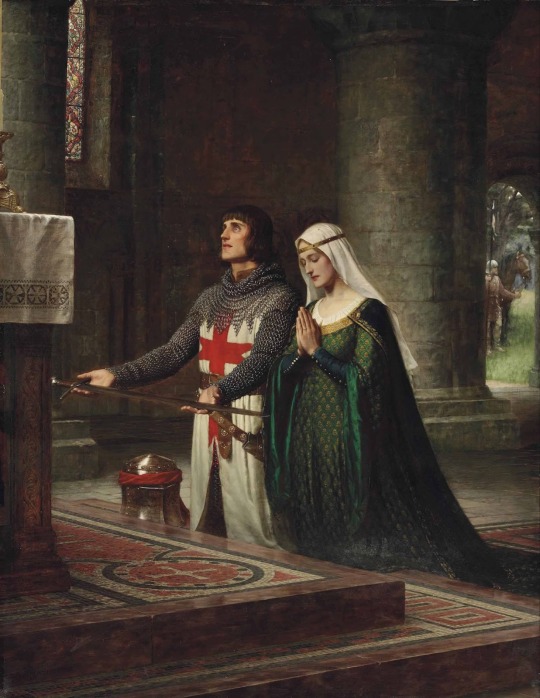
I like to start my days praying in the chapel with Sir Galahad if I have the time….just kidding! I barely know who Galahad is, only that he’s important to Lancelot for some reason. This was just a special day; Arthur is sending him off to look for the Holy Grail soon, so I accompanied him during his prayers to God for success in his quest.
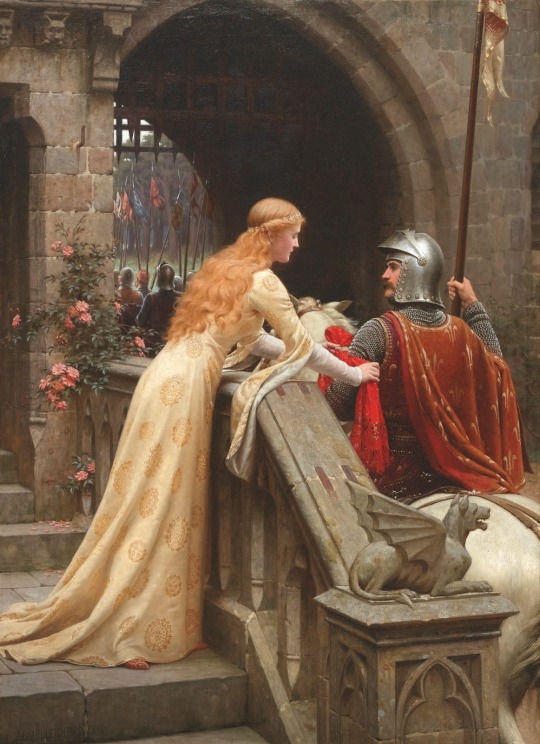
So today was a big tournament day, thanks be to God! The Knights of the Round Table headed off to go joust and do some manly things. I am not entirely sure what it is they do when they go to tournaments. I have far more important things to attend to, such as spending time with the other ladies of court and keeping up appearances! But as long as they keep up Camelot’s status and Arthur remains in power, I’m satisfied! Here, I’m giving Sir Lancelot an article of my clothing that he can wear during the tournament–this is SIMPLY because I am his patron, and was completely platonic unlike what a lot of you were saying earlier. “But Guinevere, a knight wearing a lady’s clothing in battle means she belongs to him!” Um, okay? Stop hating on me, I didn’t even know that was a thing!
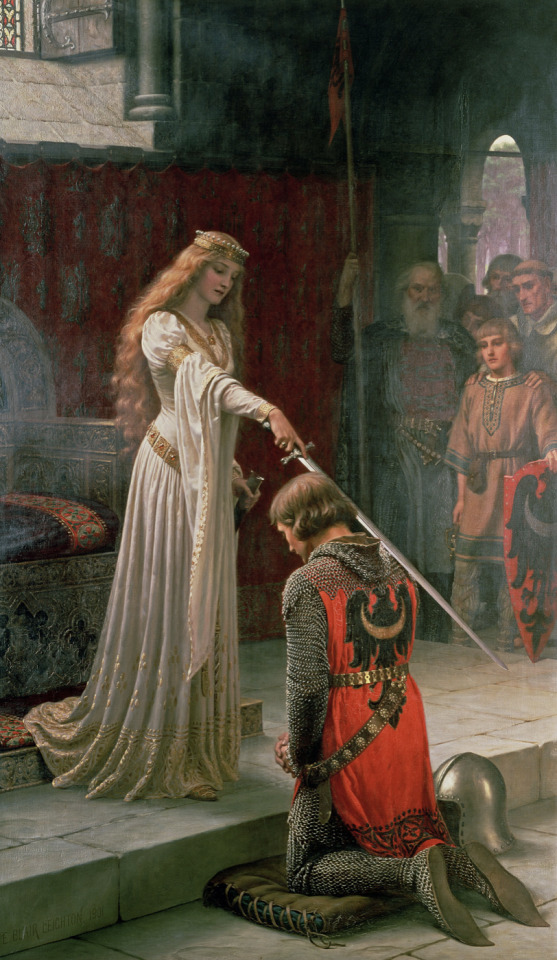
Later on in the day, I accoladed a new knight of the Round Table. It’s not really my job to do that, but Arthur was out hunting with the boys so I had to step up to the plate. Apparently this guy’s name is…Balyn? I think? He slayed a beast, I’m pretty sure, or maybe an enemy king–honestly I was more appreciative of how much money and status he’s going to bring to Camelot. Arthur’s getting a little weak lately, I really must tell him to hold MORE tournaments and hold MORE banquets. Anyway, look how elegant my dress is! Arthur brought it back from France and it makes me look QUITE ethereal.

I’ll usually end my day with an evening stroll around Camelot. I like to get away from the stuffy castle air and it gives me time to think about whose life I will make worse the next day. Today, Sir Lancelot accompanied me, which was so friendly of him; he’s definitely one of my favorite knights, and I love being his patron.
Image sources:
First painting: A Medieval Beauty, Edmund Blair Leighton, 1896
Second painting: The Dedication, Edmund Blair Leighton, 1908
Third painting: God Speed, Edmund Blair Leighton, 1900
Fourth painting: The Accolade, Edmund Blair Leighton, 1901
Fifth painting: Sir Launcelot Looks on Queen Guinevere, James Archer, 1864
#arthur pendragon#guenevere#king arthur#medieval literature#round table#lancelot#gawain#lancelot du lac#queen guinevere#medieval#middle ages#medieval art#12th century#mallory
2 notes
·
View notes